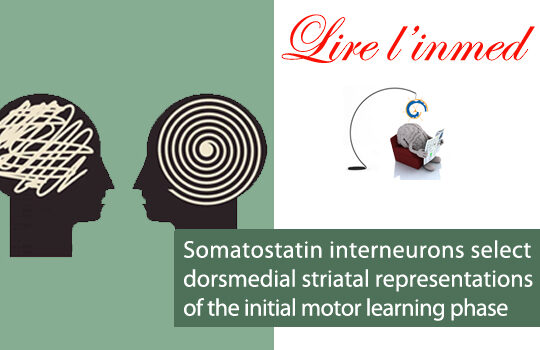
Focused or diffuse thinking? Clearly, there are ups and downs and even individual differences in how we approach learning new things. In this study, the authors identify potential contributors to these differences: the SOM, or somatostatin interneurons, in the dorsomedial striatum (DMS). They found that activating the SOM reduced noise in global DMS activity and allowed specific neuronal clusters to emerge. Moreover, SOM activation made mice seemingly more focused and quickly more efficient at mastering runs on the rotarod. So, blame it on the SOM next time you’re feeling too distracted! (I. Bureau)
Authors: Sanziana Rotariu, Gisela Zalcman, Nagham Badreddine, Florence Appaix, Stefania Sarno, Ingrid Bureau & Elodie Fino
Scientific abstract: The dorsomedial striatum (DMS) is an associative node involved in the initial formation of motor sequences and the adaptation of ongoing actions. During early associative or motor learning tasks, DMS shows a global reduction of activity, eventually refining a subset of active neurons whose number correlates with animal performance. Understanding how this representation emerges is crucial to deciphering the plasticity mechanisms underlying early phases of learning. Here, we propose that local inhibitory interneurons shape early DMS representation and influence task performance. We report that the selective manipulation of somatostatin (SOM)-positive interneurons disrupts DMS activity reorganization and modulates early-learning performance. This effect is cell specific, as manipulation of parvalbumin-positive interneurons has no effect. We also identify the high plasticity of SOM-mediated feedforward inhibition as a critical modulator of striatal projection neuron firing activity. Hence, SOM interneurons are key DMS circuit organizers and set the pace of early learning.
Paru dans Cell Reports, 2025
